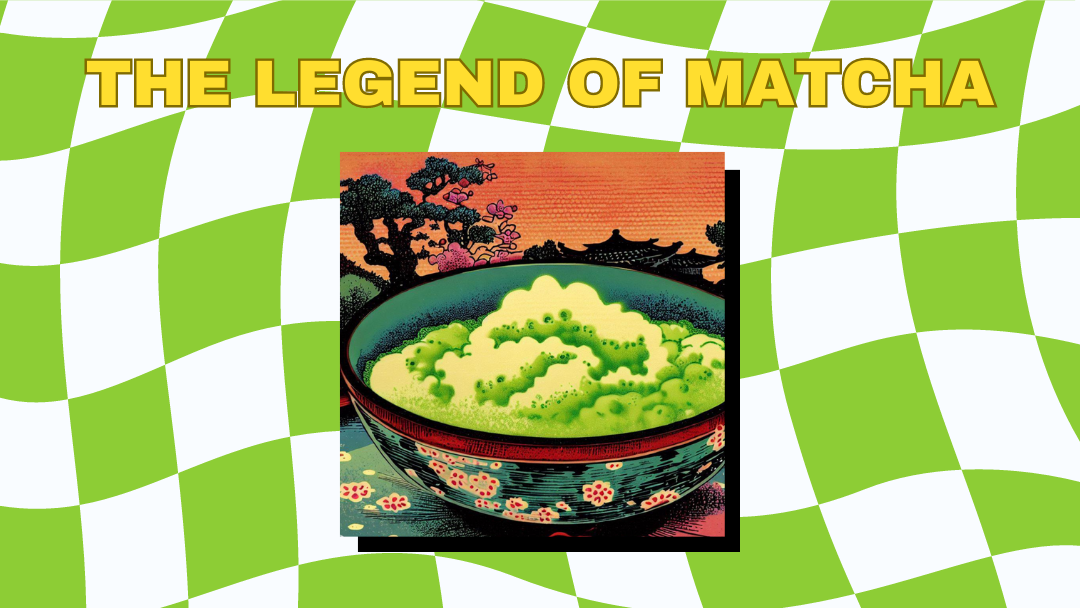The intriguing story of matcha green tea, the bright green powdered tea known for its unique flavor and numerous health benefits, spans over a thousand years. Its origins can be traced back to ancient China, while its revered position in traditional Japanese tea ceremonies adds to its rich cultural heritage and influence on the world of tea. Come along with us as we embark on an expedition through time, exploring the captivating history of matcha green tea.

The Tang Dynasty (618-907 AD): The Birth of Matcha
The story of matcha can starts all the way back to the Tang Dynasty, a golden era in Chinese history known for its flourishing arts, culture, and trade. During this period, tea was an integral part of Chinese life, prized for its medicinal properties and as the beverage of choice among the aristocracy.
In an effort to make tea more portable and suitable for long journeys, Chinese tea artisans devised a new method of processing tea leaves. Instead of the traditional method of steaming and drying whole leaves, they began to steam, compress, and shape the leaves into compact cakes. These tea cakes were called "tea bricks" or "tea cakes."

The Song Dynasty (960-1279 AD): The Emergence of "Whisked Tea"
The innovation of tea cakes laid the foundation for the creation of what would later become matcha. During the Song Dynasty, the practice of grinding tea cakes into fine powder became popular. This new preparation method was called "whisked tea" (碾茶, niǎnchá), as the powdered tea was whisked in hot water to create a frothy beverage.
This powdered tea found favor among Buddhist monks for its calming properties and ability to provide sustained energy during long hours of meditation.

The Arrival of Matcha in Japan: The Influence of Eisai
In the 12th century, a significant turning point in matcha's history occurred with the influence of Zen Buddhist monk Eisai. Eisai travelled to China to further his study in Zen Buddhism. He returned to Japan, bringing back with him Zen Buddhist teachings, tea seeds and the knowledge of cultivating tea plants. He planted these seeds in the temple grounds of Kozanji Temple in Kyoto, marking the introduction of tea cultivation in Japan.
Eisai wrote a book called "Kissa Yojoki" ("How to Stay Healthy by Drinking Tea"), in which he praised the health benefits of tea consumption and advocated for the regular consumption of powdered tea for its medicinal properties. He stated “Tea is the elixir of life and the magic key to longevity.”

The Kamakura Period (1185-1333): The Japanese Tea Ceremony
It was during the Kamakura period that matcha truly began to take shape in Japanese culture. The methods of cultivating and processing tea plants improved, allowing for a more refined tea experience.
Alongside matcha's popularity, the Japanese tea ceremony, also known as "chanoyu" or "sado," came into practice. The practice of preparing and serving matcha in a ceremonial setting became an integral part of Japanese culture and aesthetics. The tea ceremony elevated matcha from a simple beverage to an art form, embodying four principles - Harmony, Respect, Purity and Tranquility.

The Elixir of Samurai Warriors
During this period, matcha also found favor among samurai warriors. They revered matcha for its energizing and mindful properties, which provided essential support for their challenging lifestyles and fierce battles. Likewise, matcha's connection with Zen Buddhism, with its focus on self-discipline and inner fortitude, further heightened its appeal. Matcha held a special significance for these warriors, becoming a pre-battle ritual that helped provide peace of mind for the unpredictable conditions of battle ahead.

Conclusion
The captivating origin of matcha can be traced all the way back to ancient China, where the innovative practice of grinding tea leaves into powdered form laid the groundwork for what would later become matcha. Today, matcha has become a global phenomenon. Some might say it’s just the latest Instagram trend but the long-standing history that proceeds it says otherwise.
Matcha continues to enchant people worldwide, with its unique flavor, vibrant color, and numerous health benefits making it a cherished beverage embraced by tea enthusiasts and health-conscious individuals alike. As we savor every sip of matcha, we can't help but reflect on the rich history this drink is steeped in - a history that began in Zen Buddhist monasteries of ancient China and found its way to the serene tea ceremonies of Japan where Samurai warriors prepared themselves for battle.


